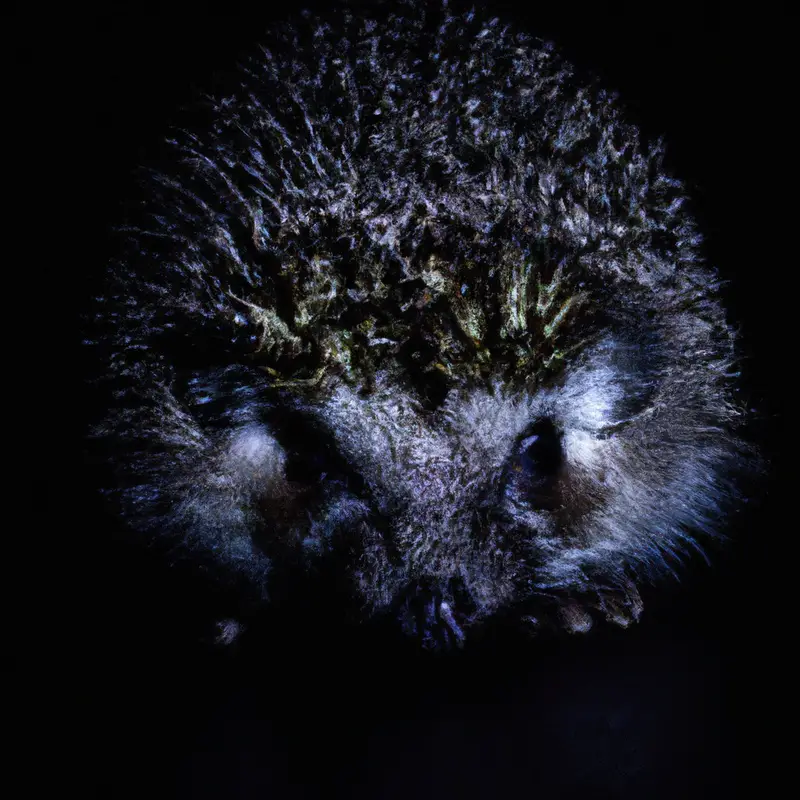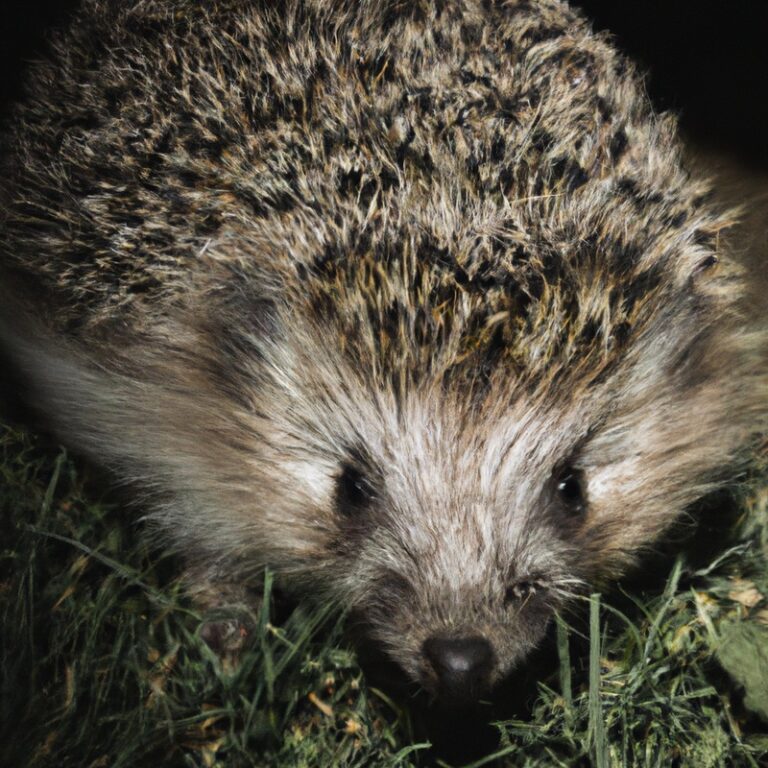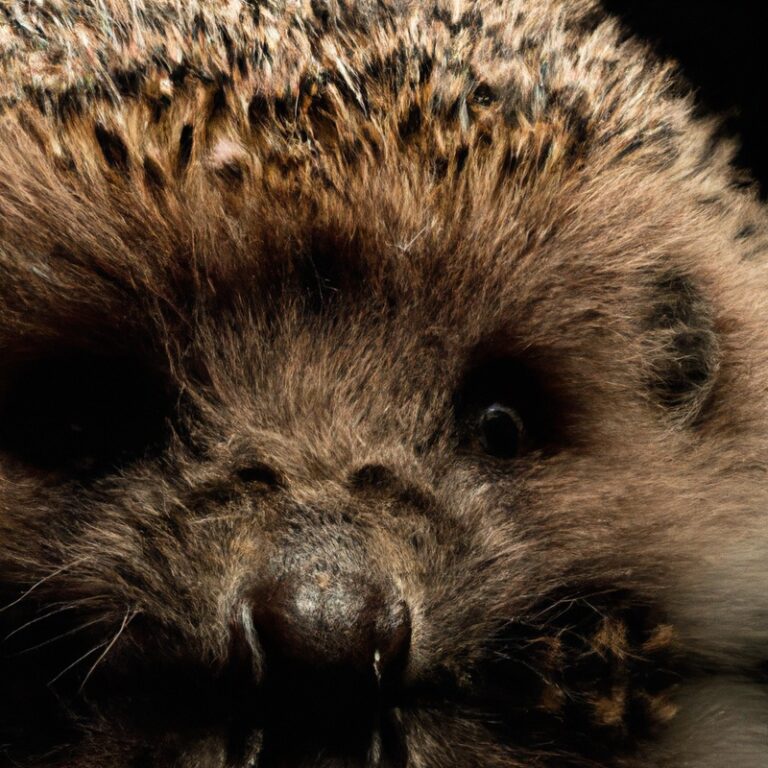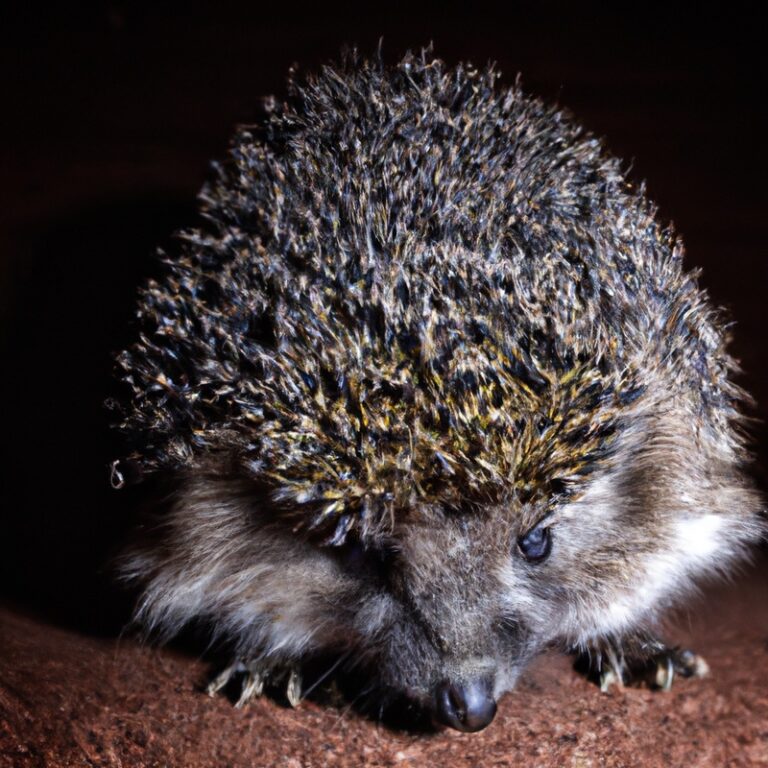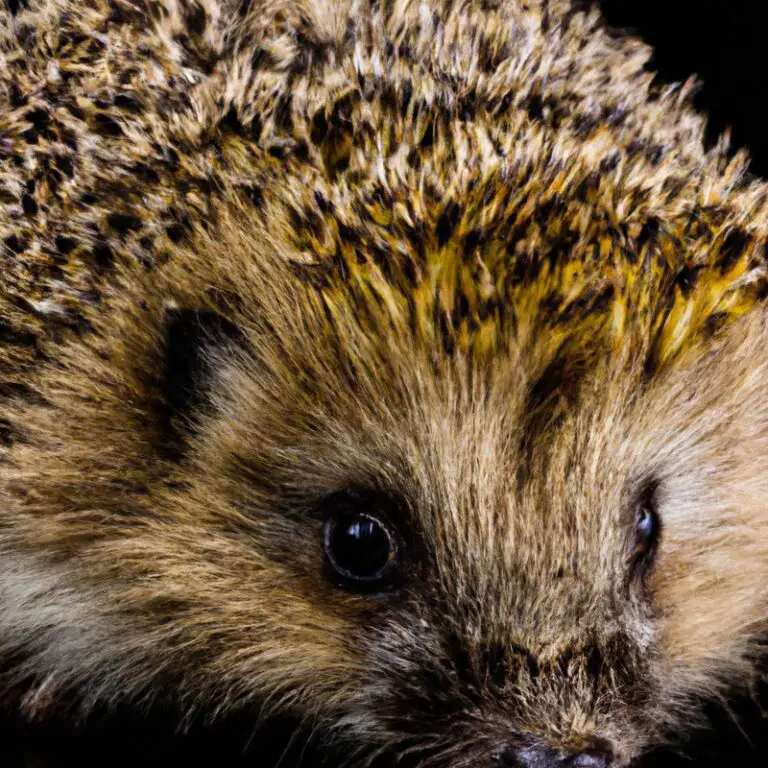How To Identify Common Hedgehog Predators?
Key Takeaways:
- Hedgehogs have several common predators, including foxes, badgers, and domestic cats.
- Signs of predator activity include disturbed or damaged nests, hedgehog droppings near nest entrances, and footprints around the area.
- Implementing protective measures, such as creating hedgehog-friendly gardens with secure fencing and providing feeding stations, can help reduce predator risks.
- Monitoring hedgehog habitats during vulnerable periods, like breeding season, can help identify and address potential predator threats.
Are the hedgehogs in your garden mysteriously disappearing?
Are you curious about the predators that might be lurking in the shadows?
Well, look no further! In this article, we will explore the fascinating world of hedgehog predators and learn how to identify them.
From native wildlife to domestic pets, these cunning creatures pose a threat to our spiky friends.
We will delve into the physical signs of predation, behavioral changes in hedgehogs, and even examine their habitats for clues.
So, if you’re itching to uncover the secrets of hedgehog predators, grab your detective hat and let’s get started!
| Predator | Characteristics |
| Birds of prey | Have sharp claws and beaks, excellent vision, and are fast flyers |
| Foxes | Have keen senses, sharp teeth, and are agile runners |
| Badgers | Have strong claws, sharp teeth, and are excellent diggers |
| Dogs | Have strong jaws, sharp teeth, and are fast runners |
| Cars and vehicles | Can unintentionally run over hedgehogs |
| Garden tools and machinery | Can inadvertently harm hedgehogs if not used carefully |
| Chemicals and toxins | Can poison hedgehogs if ingested or absorbed |
Hedgehog Predators in the Wild
In the wild, hedgehogs have natural predators that pose a threat to their survival.
Overview of natural hedgehog predators
Hedgehogs have a number of natural predators in the wild. Some of the most common ones include:
- Foxes: Foxes are known to prey on hedgehogs, especially young or weak ones. They use their sharp teeth and agility to catch and kill them.
- Badgers: Badgers are another natural predator of hedgehogs. They have strong claws and can dig into hedgehog burrows to reach and attack them.
- Birds of prey: Large birds of prey such as owls and eagles can hunt and prey on hedgehogs. They use their sharp beaks and talons to catch and kill them.
- Domestic pets: Dogs and cats can also pose a threat to hedgehogs. They may try to chase, attack, or even kill them if they come across them.
- Humans: While not a natural predator, human activities such as habitat destruction, road accidents, and illegal hunting can negatively impact hedgehog populations.
It’s important to be aware of these natural predators to help protect hedgehogs and their habitats.
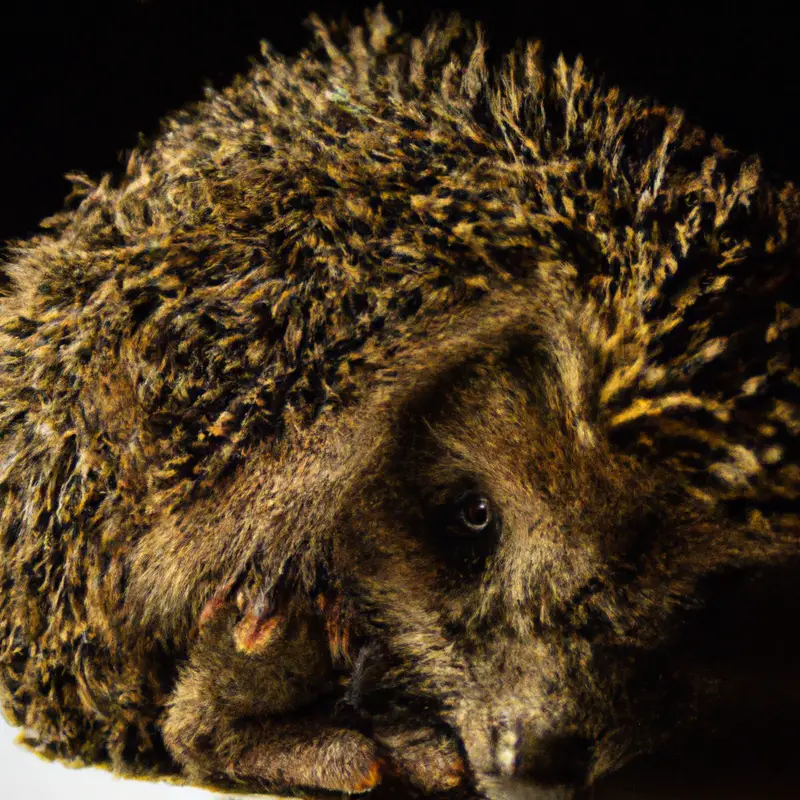
Common predators in different geographic regions
In different parts of the world, hedgehogs face various predators.
Here are some common hedgehog predators based on their geographic regions:
- North America: In North America, predator species such as coyotes, foxes, raccoons, and owls pose a threat to hedgehogs.
- Europe: In Europe, hedgehogs have to watch out for predators like badgers, foxes, stoats, and birds of prey such as buzzards.
- Africa: In Africa, hedgehogs may encounter predators such as snakes, mongooses, wildcats, and birds like the secretary bird.
- Australia: In Australia, hedgehogs face challenges from predators like dingoes, goannas, and large birds like the wedge-tailed eagle.
These predators vary depending on the ecosystem and natural habitats of hedgehogs in different geographic regions.
It’s essential to be aware of these potential threats to ensure the safety of hedgehogs in the wild.
Understanding the predator-prey relationship
In the wild, predators and prey have a symbiotic relationship. Predators hunt and eat their prey, while prey tries to avoid being eaten.
This relationship is crucial for maintaining a balanced ecosystem.
Predators help control the population of prey species, preventing overpopulation and its negative effects. Prey species, on the other hand, keep predators fed, ensuring their survival.
This delicate balance is essential for the health and stability of the ecosystem.
Understanding the predator-prey relationship helps us appreciate the intricate web of life and the importance of conservation efforts.
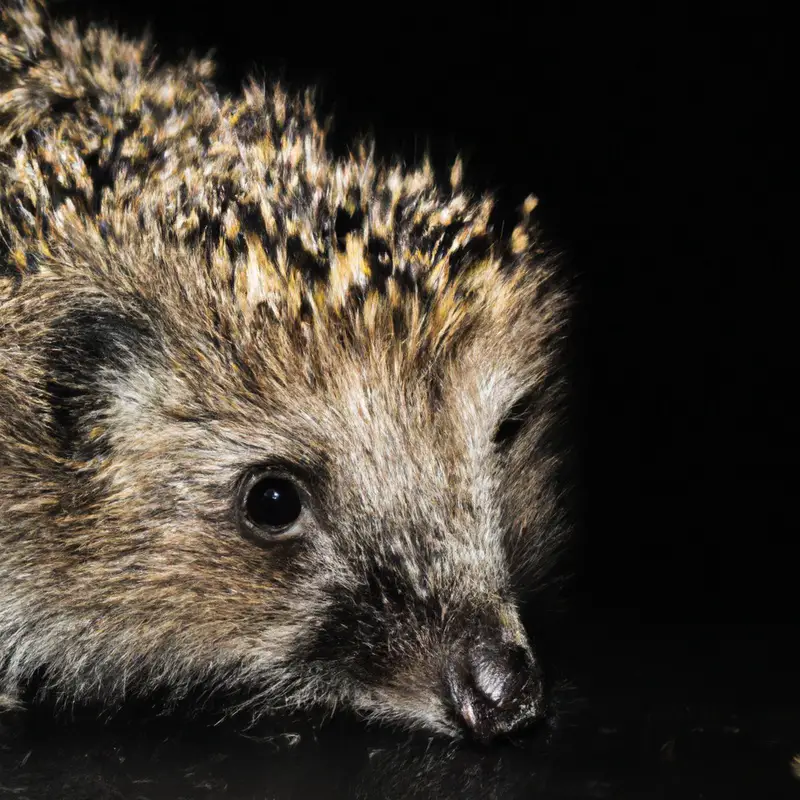
Signs of Hedgehog Predation
Look out for physical signs of predation on hedgehogs and observe any behavioral changes they may display. Additionally, examining their habitats for signs of predation can also help identify common hedgehog predators.
Physical signs of predation
Physical signs of predation on hedgehogs can be identified by the presence of certain clues. Some common signs include finding scattered spines and fur in the area, as predators often pluck them out while feeding.
Scratches, tears, or puncture wounds on the hedgehog’s body can also indicate an attack.
Blood stains or smears may be present, and in some cases, the remains of the predator’s saliva or teeth marks can be found. Additionally, finding tracks or footprints of known hedgehog predators near the scene is another physical sign to watch out for.
Behavioral changes in hedgehogs
Hedgehogs may exhibit certain behavioral changes when they are under stress or facing potential predators.
These changes can include increased aggression, hiding for longer periods of time, or becoming more defensive when approached.
They may also exhibit changes in their feeding patterns, such as a decrease in appetite or refusing to eat altogether.
Additionally, hedgehogs may become more vocal or exhibit signs of distress through huffing or making high-pitched noises.
These behavioral changes can serve as a warning sign that something is amiss for hedgehogs in their environment.
Examining hedgehog habitats for signs of predation
The presence of signs such as disturbed burrows, scattered spines, or droppings, can indicate predation in hedgehog habitats.
Keep an eye out for footprints, feathers, or fur near their nesting sites as well.
Regularly inspect the surroundings for these telltale indications to better understand if hedgehogs are being preyed upon in their habitat.
Additionally, setting up motion-activated cameras can help capture evidence of potential predators and provide valuable insights into hedgehog predation patterns.
Common Hedgehog Predators
Common hedgehog predators include domestic pets, native wildlife, and nuisance animals.
Domestic pets as hedgehog predators
Domestic pets, such as cats and dogs, can pose a threat to hedgehogs.
These pets might view hedgehogs as prey and chase or attack them.
Cats are especially known for their hunting instincts, and small hedgehogs can be easy targets for them.
Dogs, on the other hand, might unintentionally harm hedgehogs if they are not properly supervised.
It’s important to keep domestic pets away from hedgehog habitats to ensure their safety.
Native wildlife predators
Native wildlife predators of hedgehogs include foxes, badgers, and domestic cats. These animals are natural hunters and may see hedgehogs as potential prey.
Foxes are particularly skilled at hunting hedgehogs, while badgers can also pose a threat due to their larger size and strong digging abilities.
Domestic cats, especially those that are allowed to roam freely, may also prey on hedgehogs. It’s important to be aware of these predators if you want to protect hedgehogs in your area.
Nuisance animals that prey on hedgehogs
Nuisance animals that prey on hedgehogs include foxes, badgers, and domestic dogs.
Foxes are skilled hunters and are known to go after hedgehogs.
Badgers also pose a threat to hedgehogs and may attack them if they come across them.
Domestic dogs, especially those that are not trained or kept on a leash, may see hedgehogs as prey.
It’s important to be aware of these animals and take measures to protect hedgehogs from them.
Identifying Predators Through Tracks and Scat
To identify hedgehog predators, you can examine animal tracks and analyze scat left behind, which can provide valuable clues about the type of predator present.
Understanding animal tracks and identifying predators
Animal tracks can be a valuable clue in understanding the presence of predators.
Look for tracks in soft soil, mud, or snow.
The size and shape can help determine the type of predator.
For example, large canine prints may indicate a fox or coyote, while smaller prints with claw marks could belong to a raccoon or small predator.
Fresh tracks indicate recent activity, so be vigilant and observe your surroundings.
Additionally, identifying scat (animal droppings) can also provide clues to the presence of predators.
Look for distinctive shapes, sizes, and contents to help identify potential threats.
Analyzing scat to determine the predator
Analyzing scat is a useful method for determining the predator that may be lurking around.
When examining scat, look for specific characteristics such as size, shape, and content.
For example, if you find scat that contains fur or feathers, it could indicate a bird or mammal predator.
Additionally, the presence of bone fragments can be a clue to a carnivorous predator.
Keep in mind that scat can vary depending on the animal’s diet and habitat.
So, it’s important to familiarize yourself with the scat of different predators in your area.
Guide to identifying common predator tracks and scat
Identifying predator tracks and scat can help you determine what animals may be a threat to your hedgehogs.
Here’s a simple guide to help you identify common predator tracks and scat:
- Tracks: Look for paw prints in the soil or mud. Measure the size of the print and note the number of toes. Common predators like foxes and badgers have distinct paw prints. Fox tracks are typically smaller than badger tracks and have a more narrow shape.
- Scat: Predator scat can provide valuable information. Fox droppings are often long and twisted, resembling a twisted rope. Badger scat is tube-shaped and can vary in color depending on their diet.
- Bird of prey signs: Keep an eye out for feathers, especially near nesting sites. Owls and other birds of prey may leave scattered feathers after hunting.
- Other signs: In addition to tracks and scat, look for signs of disturbance in the area. Dug-up soil or disturbed vegetation may indicate the presence of a predator.
Remember, identifying predator tracks and scat is not a foolproof method, but it can give you a better idea of what animals are present in your area.
If you suspect a predator is targeting your hedgehogs, take appropriate protective measures to keep them safe.
Predator Deterrents and Protection
To protect hedgehogs from predators, there are several effective deterrents and protection measures you can take.
Creating a hedgehog-friendly garden
To create a hedgehog-friendly garden, there are a few simple steps you can take.
Firstly, provide a safe shelter for them by leaving a wild corner with piles of leaves and logs.
Second, ensure there’s access to fresh water by placing a shallow dish in a secluded area.
Third, ditch harmful pesticides and slug pellets that can harm hedgehogs.
Lastly, create small gaps in fences and walls to allow hedgehogs to freely roam between gardens.
Installing barriers to prevent access
Installing barriers is an effective way to prevent access to hedgehog predators.
Here are some options you can consider:
- Fencing: Install a sturdy fence around your garden, at least 1 meter high, with a small mesh size to prevent predators from entering.
- Hedgehog-friendly gates: Use gates with gaps or small holes that hedgehogs can pass through, but that prevent larger animals from entering.
- Hedgehog houses: Provide hedgehogs with safe spaces to hide and sleep, such as specially designed hedgehog houses or piles of logs and leaves.
- Wildlife-friendly planting: Create dense shrubs and bushes to provide hedgehogs with protective cover and discourage predators from approaching.
- Avoiding chemical use: Minimize the use of pesticides and herbicides, as these can harm hedgehogs and disrupt the natural balance of predators.
Remember, installing barriers is an important step in protecting hedgehogs from predators and creating a safe environment for them to thrive.
Using repellents to deter predators
Using repellents is an effective way to deter predators from targeting hedgehogs. One common repellent is ammonia-soaked rags placed near vulnerable areas.
Predators dislike the scent and will stay away.
Another option is motion-activated lights or sprinklers, which startle and deter predators. Additionally, applying predator urine around the hedgehog’s habitat creates a natural deterrent.
It’s important to regularly reapply these repellents to ensure their effectiveness.
By using repellents, you can help protect hedgehogs from potential predators.
Frequently Asked Questions
What are the main threats to hedgehogs?
The main threats to hedgehogs include habitat loss, urbanization, and fragmentation of their natural environments.
This can lead to a decrease in suitable foraging areas and shelter.
Additionally, road traffic poses a significant danger, as hedgehogs often get hit by vehicles while crossing roads at night.
The use of pesticides and chemicals in gardens can also harm hedgehogs, as they eat insects and slugs that may be contaminated.
It’s important to create safe and welcoming spaces for hedgehogs in our gardens and raise awareness about their conservation.
How do hedgehogs defend themselves against predators?
Hedgehogs have several ways to defend themselves against predators. First, their spiky quills serve as a physical deterrent, making it difficult for predators to attack them.
Second, when threatened, hedgehogs can roll themselves into a tight ball, hiding their vulnerable underbelly.
This makes it hard for predators to reach them. Third, hedgehogs make a hissing or growling sound to intimidate their predators.
Some hedgehogs even release a foul-smelling odor to further repel potential attackers.
These defense mechanisms help keep hedgehogs safe in the wild.
Can hedgehog predators be harmful to humans?
Hedgehog predators are typically not harmful to humans. These predators, such as foxes, badgers, and owls, are primarily interested in hunting and eating small animals, including hedgehogs.
Unless provoked or threatened, they are unlikely to cause harm to humans.
However, it is important to remember that all wild animals should be respected and kept at a safe distance to avoid any potentially dangerous situations.
Final Verdict
It is important for hedgehog enthusiasts to be aware of common predators and how to identify their presence. Physical signs of predation, behavioral changes, and examining hedgehog habitats can all provide valuable insights.
Domestic pets, native wildlife, and nuisance animals are all potential predators of hedgehogs.
By learning to recognize predator tracks and scat, we can better understand the threats facing these vulnerable creatures. Implementing predator deterrents and protection measures, such as creating hedgehog-friendly gardens and installing barriers, can help to ensure their safety.
By being knowledgeable and proactive, we can contribute to the conservation of hedgehogs and their habitats.

